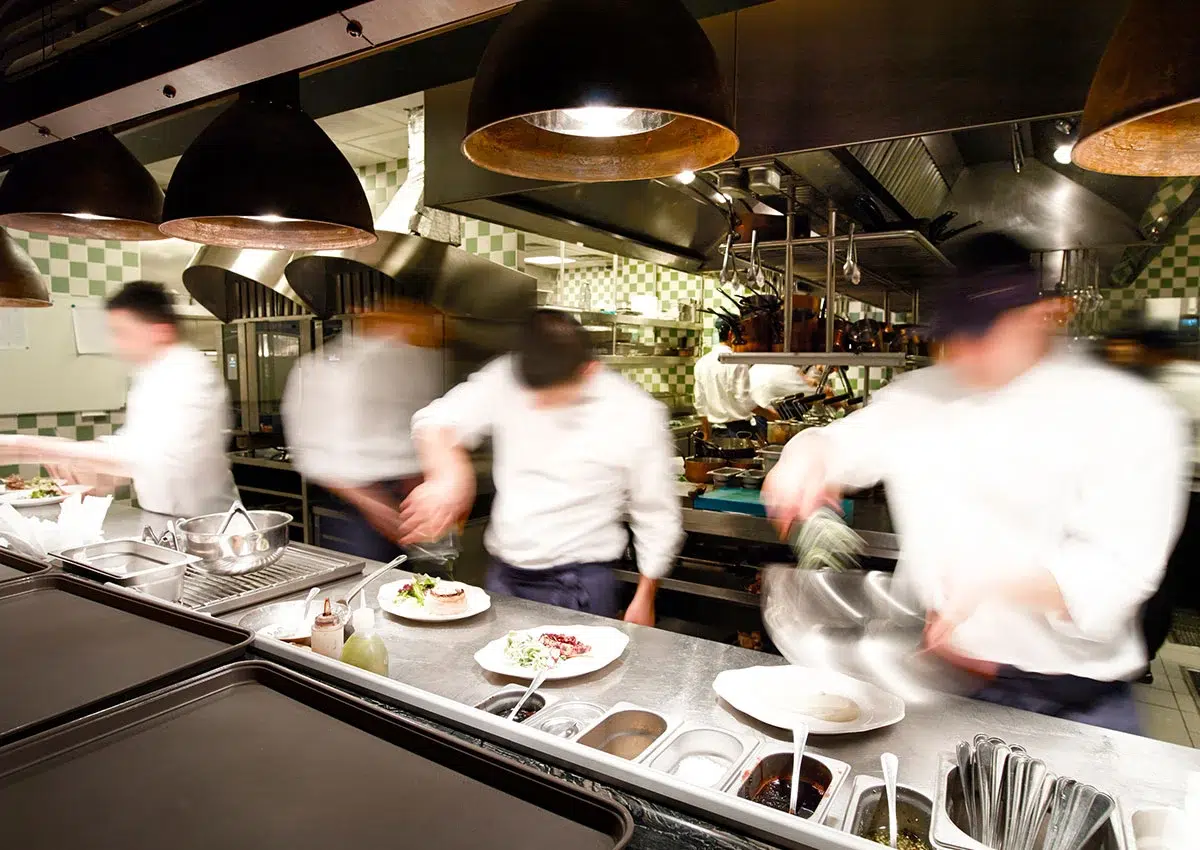Most restaurant owners have at least experienced one if not many inventory nightmares. You know what we’re talking about, the nights where every single one of your preferred dishes is 86’d because of a missing ingredient. The lack of proper inventory makes your staff’s job harder, and it upsets customers.
Understanding how to manage your restaurant’s inventory is vital to the success of your business. Part of this is knowing how to calculate your restaurant inventory turnover rate. Your inventory turnover rate is one of the most powerful things you can learn in the restaurant industry. It’s a tool you can use to measure more accurate purchase decisions, food waste, and profitability.
This blog post will break down everything you need to know to understand your inventory turnover rate.
What is A Restaurant Inventory Turnover Rate?
A restaurant’s inventory turnover rate (or ITR) is the number of times its inventory sells in a given period. It’s also known as inventory turns, stock turn, and or stock turnover.
Many reasons can factor into whether you have a high or low turnover rate. Generally, a high ITR indicates efficient selling of inventory, and sales are steady. A low ITR can represent an excess of inventory and low sales.
It takes time to figure out what your ITR is trying to tell you about your business. It’s crucial to look at the bigger picture when evaluating your turnover rate.
Are you holding on to too much inventory? How are your current sales? How much food do you throw out due to spoilage and over-stock?
Why is it Important?
Your restaurant ITR can help you measure the overall efficiency of your business. It’s critical to calculate turnover because the food in your restaurant has a shelf life.
This insight can help you manage your inventory, food costs, and bottom line.
How to Calculate Your Restaurant Inventory Turnover Rate
There are two simple ways to calculate your restaurant’s inventory turnover rate. The difference between the two is whether you use your total annual sales or the total cost of goods sold.
Method #1 Inventory Turnover (TTM) Using COGS:
The first and most preferred way to calculate ITR is by using the Cost of Goods Sold (COGS). Cost of Goods Sold is also known as Cost of Sales or Cost of Revenue on your restaurant’s income statement.
First, you need to calculate your COGS and average inventory using the same time period with the following formulas:
- Cost of Goods Sold = Beginning Inventory + Purchases – Ending Inventory
- Average Inventory = (Beginning Inventory + Ending Inventory)/2
Then, you can begin to calculate your ITR with this formula:
- Inventory Turnover Rate = COGS / Average Inventory
Our integration partner QuickBooks has an inventory turnover calculator that you can find here. Their calculator formula uses the COGS method.
Method #2 Inventory Turnover (TTM) Sales:
The second way to calculate your ITR is by using your restaurant’s total annual sales and divide it by your average inventory.
- Inventory Turnover Rate= Total Annual Sales / Average Inventory
Why is Using the COGS Method Preferred?
Restauranteurs prefer the COGS method because it provides greater accuracy and does not include markups in which the sales formula does. Dividing annual sales by average inventory inflates your ITR and can lead you to believe you are turning inventory faster than you are. Using the sales method could lead to purchasing more stock and wasting money when you don’t need to.
No matter which ratio you decide to use, it’s a must that you specify whether it’s COGS or Total Sales when comparing your rate to others.
How to Calculate Your Inventory Turnover Period
After you have determined your ITR, you can use it to calculate your turnover period in one easy step. Your inventory turnover period refers to the average number of days it takes to sell through inventory.
Because there are 365 days in the year, you divide your ITR by 365 to get your inventory turnover period.
Use this formula:
- Inventory Turnover Period = 365 / Inventory Turnover Rate
Let’s go through an example step-by-step to see these calculations in action. Remember, the first step in calculating your ITR is choosing a time period. For this example, we will analyze inventory for the whole year.
You’re an owner of a full-service restaurant; your COGS for the year totaled $700,000. Your beginning inventory was worth $165,000, and your ending was $18,000.
Step #1. Determine COGS from your annual income statement.
$700,000
Step #2. Use the same period and add your begging and ending inventory.
$165,000 + $18,000 = $183,000
Step #3. Calculate the average inventory with the formula in Method #1.
($165,000 + $8,000) / 2
$183,000 / 2 = $91,500
Average Inventory = $91,500
Step #4. Calculate ITR with formula from Method #1.
$700,000 / $91,500 = 7.65
Step #5. Calculate the inventory turnover period using your ITR.
365 days / 7.65 = 47.71
So, in this example, a turnover rate of 7.65 becomes about 48 days. Your restaurant sells through its stock on average every 48 days. In this hypothetical example, you should notice that having this much inventory on hand isn’t ideal for this much time.
Having food that sits for too long on the shelves is wasted money that creates excessive waste. Typically, you want as little money as possible tied up in inventory that’s not selling.
How to Optimize Your Inventory Turnover Rate
Let’s begin by going over some of the factors causing either high or low ITR.
High ITR
A high turnover rate shows that you’re appropriately buying stock as it’s needed, and you have less money tied up in current assets. Is there such a thing as your ITR being too high? The answer is yes.
When your ITR is too high, you could be running out of essential ingredients leading you to have 86’d menu items because of weak inventory management. Ineffective buying will lead to too low inventory and a loss in sales.
Low ITR
When your ITR is too low, this could indicate an inventory issue. This issue is likely causing you to not make enough in sales for the amount of stock you’re carrying.
You can help prevent this by first auditing all of your stock and identifying surplus items. You note that you don’t need them in your next order, limiting your food waste.
Restaurants are now using technology, such as inventory software tools, to help keep track of stock. Mad Mobile’s partners for inventory management are QuickBooks and Orca.
Here’s a good rule of thumb from QuickBooks. Average inventory is not too high if:
- Inventory Turnover Rate x Gross Profit Margin (%) ≤ 100%
Quick Tips For Reaching Optimal Turnover
First, we want to clarify that optimal turnover rates vary on the restaurant concept/s you own.
The latest average turnover rates in the restaurant industry for 2020 are the following:
- Q3 2020: 12.54
- Q2 2020: 11.61
- Q1 2020: 13.18
According to Optimum Control, the average turnover rates for optimal performing restaurants are:
- Food: 4 to 6 times per month
- Liquor: About once a month and varies by the restaurant concept
- Bottled Beer: 2 to 3 times per month
- Draft Beer: 1 to 2 times per month
- Wine: About once a month
Controlling your turnover rate will help you manage your whole business.
Here are five quick tips for optimizing your inventory turnover rate:
- Raise demand for inventory through a targeted and cost-effective marketing campaign.
- Use forecasting tools to monitor your expected sales and order inventory as needed.
- Compare multiple vendors and review purchase prices to negotiate discounts and offers.
- Review the business’s pricing strategy. Use restaurant analytics to help you see where you can increase the overall sales value in items.
- Utilize the best practices for restaurant inventory to prevent food waste and money loss.
Recap
Learning how to calculate and manage your ITR is vital to the success of your restaurant. Reaching an optimal ITR ensures you are efficiently managing your inventory, using your cash wisely, and maximizing your profitability.
Once you’ve mastered this, you can compare your business’s performance to others in the industry and continue to make improvements to grow your business.








